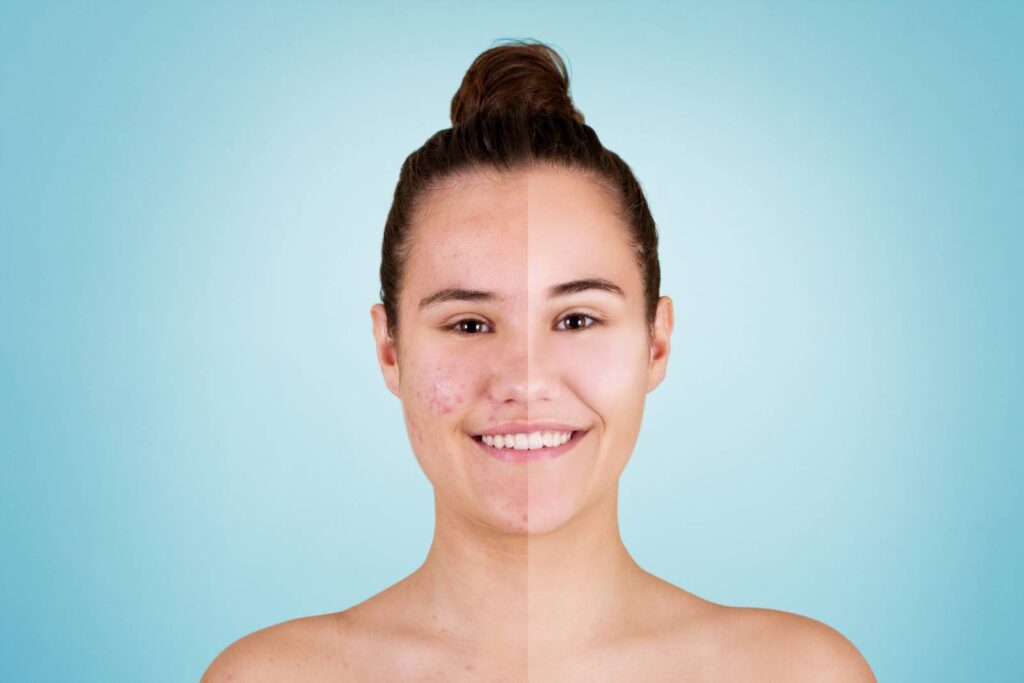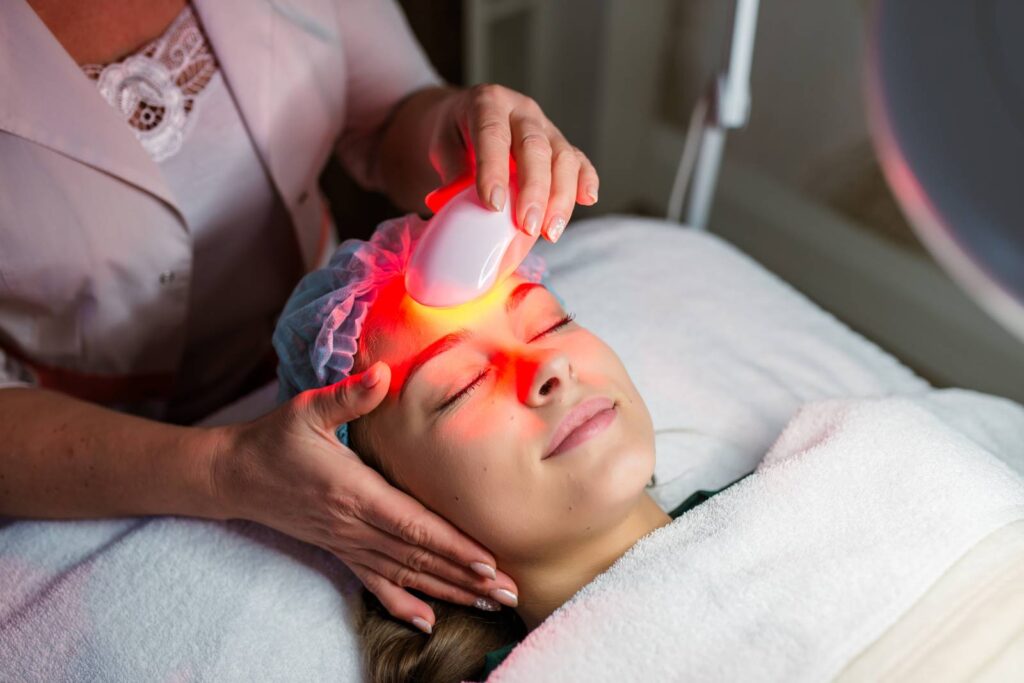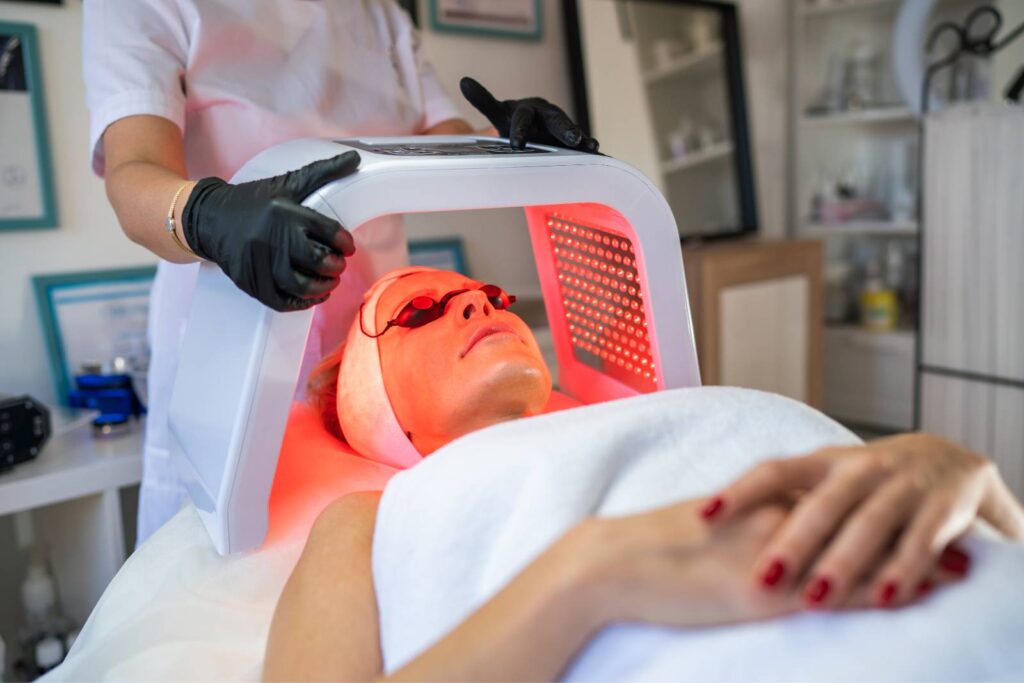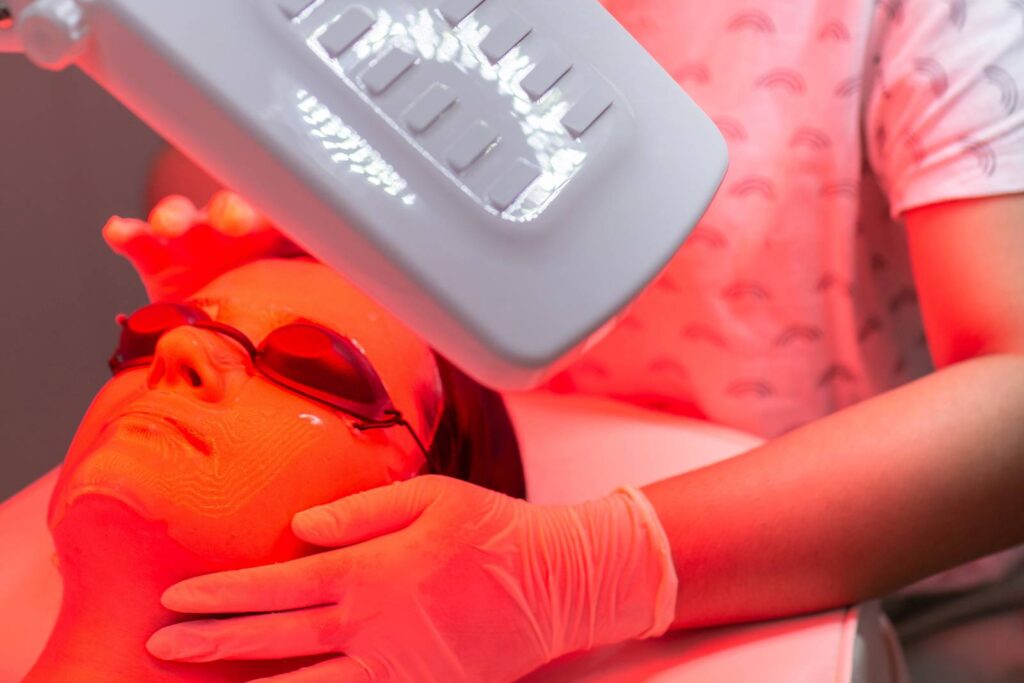Harness Clearer Skin with Red Light Therapy – Expert Guide
Acne continues to be a prevalent and persistent concern, impacting individuals of all ages and skin types. According to the American Academy of Dermatology Association, acne ranks as the most prevalent skin condition in the United States, affecting over 50 million Americans annually. This widespread skin issue manifests in various forms, ranging from mild-to-moderate acne characterized by occasional breakouts to severe, inflammatory acne that can cause significant discomfort and result in lasting skin damage and scarring.
In recent years, the skincare industry has witnessed a groundbreaking development in the form of red light therapy. This non-invasive treatment utilizes specific wavelengths of light, particularly red and infrared light, to address a wide range of skin concerns, including acne.
The objective of this article is to delve into the scientific basis of red light therapy for acne and its increasing recognition as a revolutionary approach in skincare. We will explore the mechanisms, advantages, and effectiveness of red light therapy in comparison to traditional acne treatments, such as topical creams and medications. Additionally, we will provide guidance on what to expect during a red light therapy session and emphasize the importance of selecting the appropriate medical spa for this treatment.

The Science Behind Red Light Therapy
The science behind red light therapy lies in its ability to stimulate cellular processes within the body through exposure to specific wavelengths of red light. This therapy, also known as low-level laser therapy (LLLT) or photobiomodulation, has been extensively studied for its therapeutic effects on various conditions, including skin issues like acne, wound healing, pain management, and more.
Red light therapy works by penetrating the skin’s layers and interacting with cells to promote various beneficial responses:
- Increased ATP Production: Red light stimulates the mitochondria, the energy powerhouses of cells, to produce more adenosine triphosphate (ATP). This increase in ATP fuels cellular activities and enhances their ability to function optimally.
- Improved Blood Circulation: Red light therapy can dilate blood vessels and improve blood flow, which helps deliver oxygen and nutrients to tissues while removing waste products more efficiently. This enhanced circulation aids in tissue repair and regeneration.
- Reduction of Inflammation: Red light therapy has anti-inflammatory effects, helping to mitigate swelling, redness, and pain associated with inflammatory conditions. By modulating cytokine levels and reducing oxidative stress, red light therapy helps to calm inflammation within tissues.
- Stimulation of Collagen Production: Collagen is a crucial protein responsible for maintaining skin structure and elasticity. Red light therapy stimulates fibroblasts, the cells responsible for collagen production, leading to an increase in collagen synthesis. This helps to improve skin tone, texture, and elasticity while reducing the appearance of wrinkles and fine lines.
- Antimicrobial Properties: Red light therapy has been shown to exhibit antimicrobial effects, particularly against bacteria such as Propionibacterium acnes (P. acnes), which contribute to acne formation. By targeting and destroying acne-causing bacteria, red light therapy can help alleviate acne symptoms and promote clearer skin.
Overall, the science behind red light therapy underscores its potential as a non-invasive, safe, and effective treatment for various conditions, including acne. Its ability to modulate cellular processes, reduce inflammation, promote healing, and enhance skin health makes it a valuable tool in skincare and overall wellness. However, individual responses to red light therapy may vary, and it’s essential to consult with a healthcare professional before starting any new treatment regimen.

What Are the Benefits of Red Light Therapy for Acne-Prone Skin?
-
- Reduced Inflammation: Red light therapy helps to diminish inflammation associated with acne breakouts, soothing redness and swelling.
- Killing Acne-Causing Bacteria: It targets and destroys acne-causing bacteria, particularly Propionibacterium acnes (P. acnes), helping to prevent future breakouts.
- Promotion of Healing: By stimulating cellular repair processes, red light therapy accelerates the healing of acne lesions, reducing the risk of scarring.
- Improved Skin Tone and Texture: With consistent use, red light therapy can enhance overall skin tone and texture, leaving the complexion smoother and more even.
- Non-Invasive and Gentle: Unlike some acne treatments that can be harsh on the skin, red light therapy is non-invasive and gentle, making it suitable for all skin types, including sensitive skin.
- Minimal Side Effects: It typically has minimal side effects, such as temporary redness or warmth in the treated area, which usually subside shortly after the session.
- Complementary to Other Treatments: Red light therapy can be used in conjunction with other acne treatments, such as topical medications or oral medications, to enhance results and speed up the healing process.

Red Light Therapy vs. Traditional Treatments
- Non-Invasive: Unlike many traditional treatments such as chemical peels or laser resurfacing, red light therapy is non-invasive. It doesn’t damage the skin’s surface, making it a gentler option for sensitive skin.
- Minimal Side Effects: Traditional treatments like topical retinoids or oral medications can often cause side effects such as dryness, irritation, or gastrointestinal issues. Red light therapy typically has minimal side effects, with temporary redness or warmth being the most common, which usually subside quickly.
- No Downtime: Many traditional treatments require downtime for recovery, especially more aggressive options like laser therapy or chemical peels. With red light therapy, there’s no downtime needed, allowing individuals to resume their normal activities immediately after treatment.
- Suitable for All Skin Types: Some traditional treatments may not be suitable for certain skin types or conditions. Red light therapy, however, is safe for all skin types, including sensitive skin, and can be used by individuals of any age.
- Long-Term Results: While traditional treatments may provide temporary relief from acne symptoms, red light therapy can offer long-term benefits with regular sessions. It helps address the root causes of acne, promoting clearer, healthier skin over time.
- Complementary Treatment: Red light therapy can be used in conjunction with traditional treatments for enhanced results. It can help speed up the healing process and minimize side effects associated with other acne treatments.
Overall, red light therapy presents a promising alternative to traditional acne treatments, offering effective results with minimal risk and downtime.

What to Expect During a Red Light Therapy Session
- Preparation: You may be asked to remove any makeup or skincare products from the treatment area and wear protective eyewear to shield your eyes from the light.
- Comfortable Environment: The treatment room will likely be comfortable and relaxing, with soft lighting and soothing music to enhance your experience.
- Positioning: You’ll be positioned comfortably either sitting or lying down, depending on the area being treated. The therapist will ensure that you’re positioned correctly to expose the targeted area to the red light.
- Duration: The session typically lasts between 10 to 30 minutes, depending on the specific protocol and area being treated.
- Application of Red Light: The therapist will then apply the red light to the targeted area using a specialized device. The device emits specific wavelengths of red light, which penetrate the skin to reach the underlying tissues.
- Sensation: You may feel a mild warmth or tingling sensation during the session, but it should not be uncomfortable. Many people find red light therapy sessions to be relaxing and pleasant.
- Post-Session Care: After the session, there’s typically no downtime required. You can immediately resume your regular activities. However, it’s essential to follow any post-session instructions provided by your therapist, such as applying moisturizer or sunscreen.
- Frequency of Sessions: Depending on your specific needs and goals, you may require multiple sessions spaced out over several weeks to achieve optimal results. Your therapist will recommend a treatment plan tailored to your individual needs.
